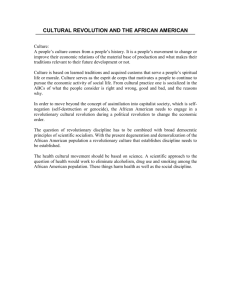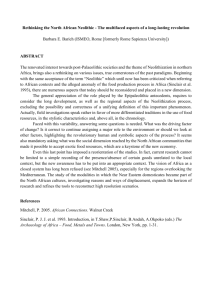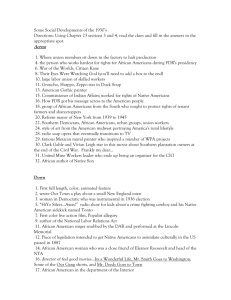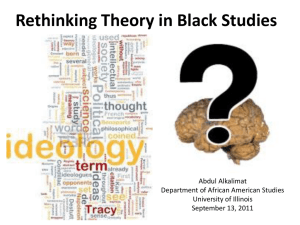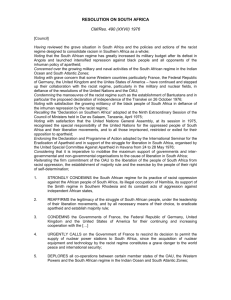when and how i wrote
advertisement
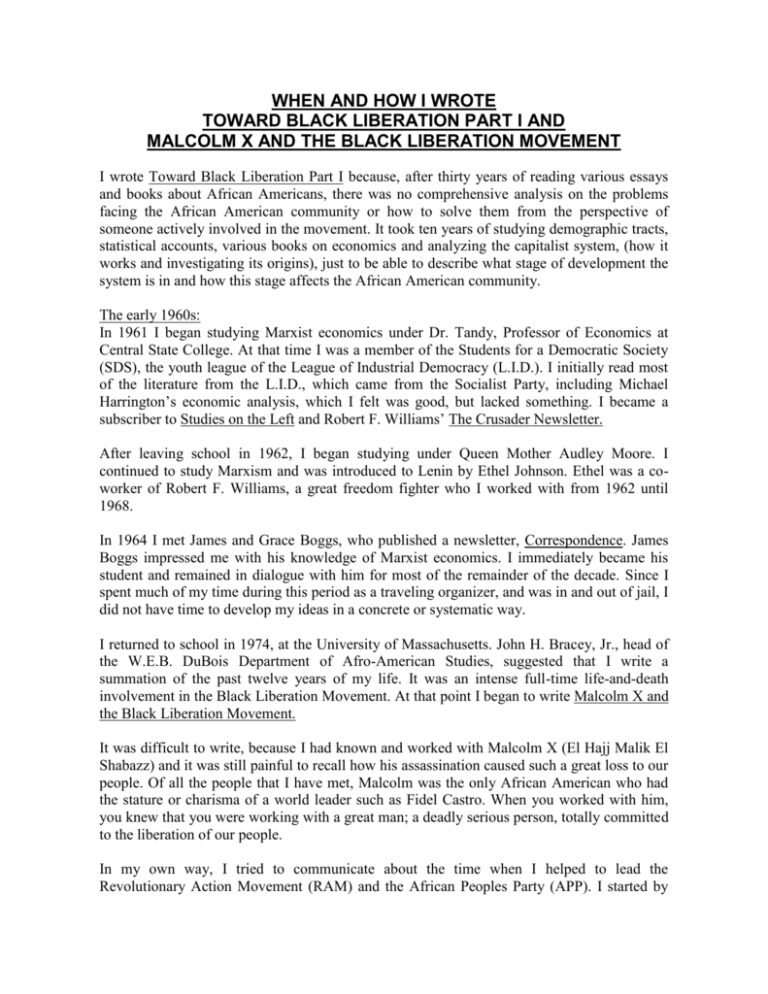
WHEN AND HOW I WROTE TOWARD BLACK LIBERATION PART I AND MALCOLM X AND THE BLACK LIBERATION MOVEMENT I wrote Toward Black Liberation Part I because, after thirty years of reading various essays and books about African Americans, there was no comprehensive analysis on the problems facing the African American community or how to solve them from the perspective of someone actively involved in the movement. It took ten years of studying demographic tracts, statistical accounts, various books on economics and analyzing the capitalist system, (how it works and investigating its origins), just to be able to describe what stage of development the system is in and how this stage affects the African American community. The early 1960s: In 1961 I began studying Marxist economics under Dr. Tandy, Professor of Economics at Central State College. At that time I was a member of the Students for a Democratic Society (SDS), the youth league of the League of Industrial Democracy (L.I.D.). I initially read most of the literature from the L.I.D., which came from the Socialist Party, including Michael Harrington’s economic analysis, which I felt was good, but lacked something. I became a subscriber to Studies on the Left and Robert F. Williams’ The Crusader Newsletter. After leaving school in 1962, I began studying under Queen Mother Audley Moore. I continued to study Marxism and was introduced to Lenin by Ethel Johnson. Ethel was a coworker of Robert F. Williams, a great freedom fighter who I worked with from 1962 until 1968. In 1964 I met James and Grace Boggs, who published a newsletter, Correspondence. James Boggs impressed me with his knowledge of Marxist economics. I immediately became his student and remained in dialogue with him for most of the remainder of the decade. Since I spent much of my time during this period as a traveling organizer, and was in and out of jail, I did not have time to develop my ideas in a concrete or systematic way. I returned to school in 1974, at the University of Massachusetts. John H. Bracey, Jr., head of the W.E.B. DuBois Department of Afro-American Studies, suggested that I write a summation of the past twelve years of my life. It was an intense full-time life-and-death involvement in the Black Liberation Movement. At that point I began to write Malcolm X and the Black Liberation Movement. It was difficult to write, because I had known and worked with Malcolm X (El Hajj Malik El Shabazz) and it was still painful to recall how his assassination caused such a great loss to our people. Of all the people that I have met, Malcolm was the only African American who had the stature or charisma of a world leader such as Fidel Castro. When you worked with him, you knew that you were working with a great man; a deadly serious person, totally committed to the liberation of our people. In my own way, I tried to communicate about the time when I helped to lead the Revolutionary Action Movement (RAM) and the African Peoples Party (APP). I started by making notes and conducting interviews with friends and ex-activist scholars. My first attempt was “On the Black Student Movement: 1960-1970” which was published in the Black Scholar Magazine in 1978. Also, in the fall of 1976, while at the University of Massachusetts, I took a philosophy course on Marxism in order to expand my knowledge on how it can be applied to revolutionary movements. I extended this study into a study of “RAM as a Social Movement” while I was at Atlanta University from 1977 until 1979 (although I stayed in Atlanta until 1982). Under the watchful guidance of Dr. Larry Moss, my advisor, and Dr. Mack Jones, my writing improved as I became more objective as a social scientist, and began to see the weaknesses and shortcomings in my original hypotheses. So I matured politically. This occurred with the addition of coursework at Atlanta University, and I was doing more reading than I had done up to that point in my life. The Political Science Department was concentrating on theory and I increasingly saw how important it was for solving problems. I then began to work on a second series of writings. During this time I was a member of the Coalition of Black Unity and the National Black United Front. We were concentrating on anti-Klan work in rural areas of the Black Belt South. I soon realized that I needed time to see how, and if, Lenin’s theories could be applied to the United States and what form it should take to be realized. In 1982, I moved back to Philadelphia to work on the Draft Wilson Goode for Mayor campaign to stop Frank Rizzo. From there I moved to Cleveland, in 1983. For the next five years, until 1988, I focused on developing my experience as an African American activist worker; one who had spent the previous five years in the South and various other areas of the country. I attempted to summarize the overall phenomenon of the freedom struggle affecting all African Americans, and the important role that the southern African American community and workers have to play. The chapter entitled: The Legacy of Malcolm X: Towards Building A National Democratic Movement Of A New Type describes what a new movement should address, the beginnings of a new program. The approach is described in How To Advance The Black Liberation Movement Forward. The book puts future projections into a presentation on what is happening now. As an African American radical or outright revolutionary theoretician and writer, I don’t expect unanimous agreement with my analysis. I do believe, however, that we should agree that these ideas have the right to exist if we live in a democratic society. One has the right to advocate socialism of a new type (democracy and socialism) as a solution to the plight of millions of African Americans. I am presently working on Volume 2, which will project a transitional program, an approach to workers’ power. September 30, 1991 Muhammad Ahmad (Maxwell Stanford)
